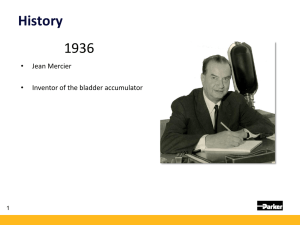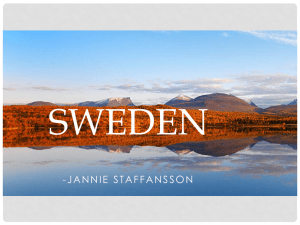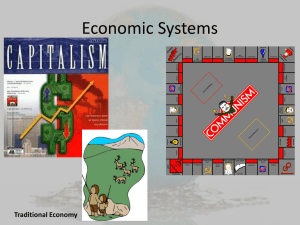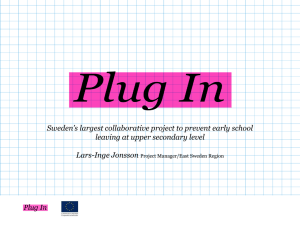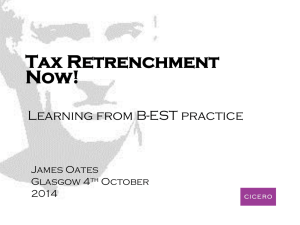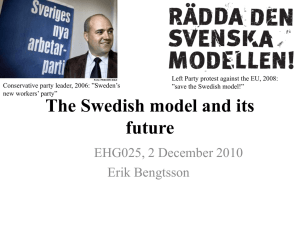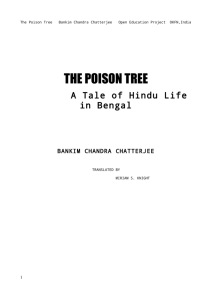Industry - EcoRegion
advertisement
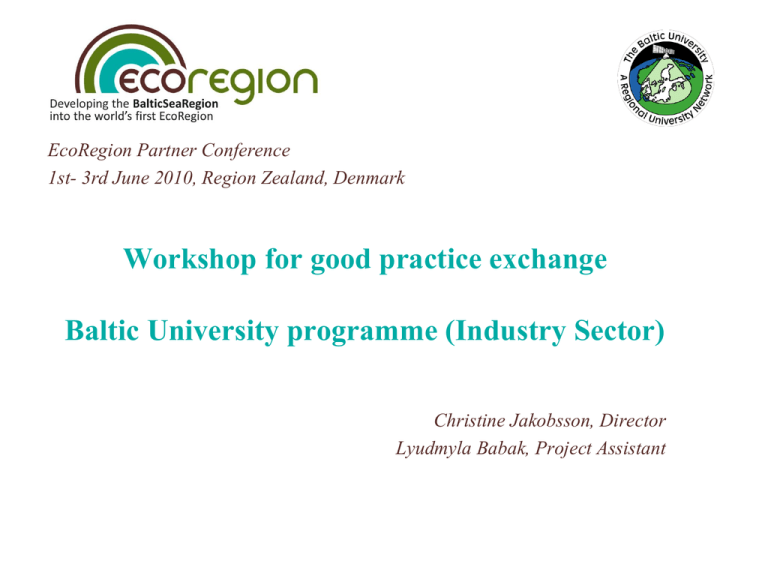
EcoRegion Partner Conference 1st- 3rd June 2010, Region Zealand, Denmark Workshop for good practice exchange Baltic University programme (Industry Sector) Christine Jakobsson, Director Lyudmyla Babak, Project Assistant Good practices by BUP Farming Advisory service on nutrients Sweden Promotion of Sustainable Agriculture and Technology in Estonia, Latvia and Estonia, Latvia and Lithuania Lithuania Innovations Competition for Environmental Innovation Halland Region, Sweden Climate technologies Sweden Public Procurement Life cycle cost assessment Jönköping municipality, Sweden Environment and health requirements for purchasing and Örebro municipality, use of chemicals Sweden Quality-controlled food in Dalsland Dalsland region, Sweden Energy Ashes from power plants as fertilizers for energy forest: a Enköping, Sweden closed loop Large heat pumps for district heating Drammen, Norway Sustainable management and utilization of biomass Poland, the Ner River areas Social Issues Ambassadors to promote women’s entrepreneurship Sweden Nature Preservation The Rospuda Valley: Protection of Nature – Problem solving The Podlaskie province, Poland Application of a denitrification wall for groundwater Poland protection in agricultural areas 2 Networks Baltic 21 institute for Sustainable Industry Education Forum “Ecobaltica” St. Petersburg, Russia; Baltic Sea Region for Bialystok, Poland English Philology Speaking Classes – Education Sustainable Development Industry Voluntary action makes licensing easy Vernitas Textile Company: Cleaner Production Project Kunda Nordic Tsement: Experience of sustainable solutions JOCCOW project: Joint Capacity Building Concerning Waste Management Roskilde, Denmark Lithuania Estonia Kaliningrad, Russia; Kalmar, Sweden 3 Kunda Nordic Tsement – experience of sustainable solutions The case Kunda Tsement is a cement factory on the coast of Gulf of Finland in Estonia. During late Soviet years it was an environmental, economical and social disaster. Today Kunda Tsement is a well working profitable industry integrated in the Estonian Society contributing to sustainability in Estonia. 4 Kunda Nordic Tsement Developments 1993-1998 1. 2. 3. 4. 5. 6. 7. New owners (twice) Renovation and Environmental Policy Investments in new filters and later in new kilns Reducing Air Pollution Reducing water use Investments in new wastewater treatment Reducing Emissions to Water 5 1992 Cement production - the third largest contributor to air pollution in Estonia (10% of cement – into the air – due to poor technology) By installation of new filters dust emission from the kilns thus have decreased from almost 80,000 tonnes (!) in 1992 to 2,000 tonnes in 1997). 6 Reduction in dust emissions Year Dust emissions per unit of production 1992 1996 1997 2004 2007 146 22 3 0.4 0.1 kg/tonne kg/tonne kg/tonne kg/tonne kg/tonne 7 8 Air quality improvement in Kunda town Year 1994 1995 1996 1997 2005 2007 Number of times Maximum Permitted Level was exceeded per year 120 127 50 4 3 7 9 Kunda Nordic Tsement Developments 1998-2005 1. 2. 3. 4. 5. 6. Introducing an EMS and ISO 14001 Certification Using Clinker Dust in Agriculture Energy Management Waste Management Introducing an Integrated Management System Economy and Public Image 10 Innovations of Kunda tsements: -a programme to promote the use of fly ash as fertilizer -utilizing hazardous waste 11 Clinker dust used for liming of agricultural fields Year Clinker dust (tonnes) 1996 1997 1998 1999 2000 2003 500 10,500 300 60,000 63,000 55,000 12 Waste used as fuel in the clinker production Year Waste (tonnes) 2001 2003 15,000 47,000 13 Large heat pump for district heating with natural refrigerant R717 (ammonia) The city of Drammen decided to use R717 (ammonia) as a refrigerant instead of R134a -prevents emission of a potent fluorinated greenhouse gas -saves electricity (about 15 %) 14 R134a: potent greenhouse gas (GWP=1430; GWP of CO2=1). Leakage rate of the system = 2 % A 14 MW heat pump would require a charge of approximately 14,000 kg R134a (1 kg/kW). A leakage rate of 2 % emission of 280 kg x 1430= 400,040 kg CO2-equivalent annually! Equivalent to 1.4 Million miles in a car. If electricity is provided by renewable sources, the heat pump is able to operate 100 % climate neutral. Heat source of the device is sea water (installed by Star Refrigeration (Glasgow, Scotland) & Norsk Kulde (Norway)). 13.04.2015 15


